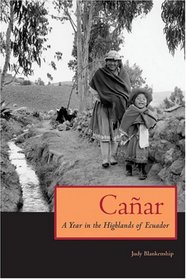Search -
Canar: A Year in the Highlands of Ecuador
Canar A Year in the Highlands of Ecuador
Author:
"General readers will enjoy this book. . . . It will appeal to those who are curious about life in a Third World village and those who are interested in contemporary indigenous communities." —Lynn Hirschkind, Professor and Academic Director, Lewis and Clark College International Program, Cuenca, Ecuador Once isolated from the modern world... more »
Author:
"General readers will enjoy this book. . . . It will appeal to those who are curious about life in a Third World village and those who are interested in contemporary indigenous communities." —Lynn Hirschkind, Professor and Academic Director, Lewis and Clark College International Program, Cuenca, Ecuador Once isolated from the modern world... more »
ISBN-13: 9780292706392
ISBN-10: 0292706391
Publication Date: 4/1/2005
Pages: 223
Edition: Lst Ed
Rating: 1
ISBN-10: 0292706391
Publication Date: 4/1/2005
Pages: 223
Edition: Lst Ed
Rating: 1
1 stars, based on 1 rating
Publisher: University of Texas Press
Book Type: Paperback
Members Wishing: 1
Reviews: Amazon | Write a Review
Book Type: Paperback
Members Wishing: 1
Reviews: Amazon | Write a Review
Genres:
- Arts & Photography >> Photography & Video >> Photographers, A-Z >> General
- Arts & Photography >> Photography & Video >> Photojournalism
- History >> Americas >> Central America >> General
- History >> Americas >> South America >> Ecuador
- Nonfiction >> Social Sciences >> Anthropology >> Cultural
- Nonfiction >> Social Sciences >> Customs & Traditions
- Nonfiction >> Social Sciences >> General
- Nonfiction >> Social Sciences >> Sociology >> General
- Nonfiction >> Social Sciences >> Specific Demographics >> Ethnic Studies




